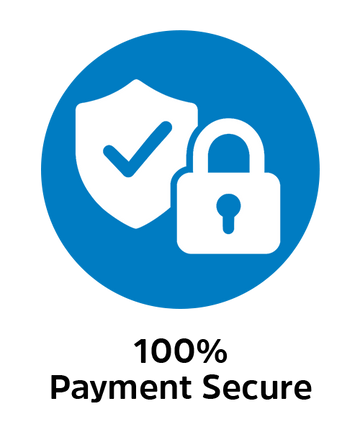Do you tap your pen during a meeting, bounce your leg while working, or doodle just to focus? Well, you’re not alone. You’re experiencing what experts call fidgeting: small, unconscious movements our bodies use to release excess energy and maintain focus.
For people managing stress, anxiety, or ADHD, fidgeting isn’t just a habit, but a natural coping mechanism. It helps regulate attention and calm restless thoughts.
This is exactly why fidget toys have become so crucial. Once seen as desk gadgets, they’re now widely recognized wellness tools. Whether you’re a student struggling to focus, a professional under pressure, or someone dealing with anxiety, the right fidget toy can help you regain control, stay present, and feel calmer throughout your day.
In today’s article, we’ll understand how fidget toys help with ADHD and stress management, explore the 7 best fidget toys, and share tips on using them effectively so you can choose the right one for your needs.
How Fidget Toys Help with ADHD, Anxiety & Stress Management
Research says that fidget toys benefit you through attention regulation, emotional balance, and sensory management, especially for individuals with ADHD or high stress levels.
Let’s explore how they work for different needs:
1. Stress Management
When you stress, your body releases cortisol – a hormone that prepares you for “fight or flight.” Physical engagement like squeezing, spinning, or twisting a fidget toy can help you release that built-up energy, signaling your body that it’s safe to relax.
In simple terms, fidgeting provides your hands something to do, so your mind can slow down.
2. Easing ADHD Symptoms
ADHD brains often crave movement. That constant need to fidget is not a lack of discipline; it’s how the brain regulates itself.
A 2024 study reported a 45% increase in on-task behavior among students with ADHD when fidget spinners were introduced in classrooms.
Fidget toys help you by enhancing concentration during less engaging tasks, but they’re most effective when used intentionally, not as toys, but as focus tools within structured routines.
3. Reducing Anxiety
Anxiety often shows up as restlessness: tapping feet, biting nails, or clenching fists. Fidget toys offer a healthier outlet to redirect that nervous energy.
When used mindfully, they help break repetitive anxious thoughts.
Top 7 Fidget Toys of 2025
Here’s a closer look at some of the best fidget toys this year: what makes them special, how they help, and their ideal use cases.
RotoBee by GirGit Toys
If you struggle with racing thoughts, restlessness, or just the constant urge to fidget, Roto Bee by Girgit Toys is made for you. It’s not just a spinner; you can roll it across a table for simple satisfaction or twirl it between your fingers to practice tricks and slides.
That dual-action motion makes RotoBee perfect for restless hands that need a mix of calm and challenge. The design includes a hinge and dual-link structure that lets you explore endless hand movements.
You don’t need screens, batteries, or anything complicated, but silent interaction that calms your mind. The RotoBee fidget toy is quiet enough for meetings, classes, or libraries and fits in your pocket, so you can carry it anywhere.
For people with ADHD or anxiety, RotoBee keeps you focused and helps with stress management. And unlike many other best fidget toys, it’s not expensive, just ₹499, and available across the globe.
Rotablade Stubby Fidget Spinner
Rotablade is known for its solid metal build and smooth, long spins that last several minutes. The weight and finish give it a satisfying feel that helps channel restlessness into motion.
Many people use it as a mindful pause tool during work or meetings. It’s costly, but if you appreciate craftsmanship and quality, it’s one of the best-built spinners around.
Antsy Labs Fidget Cube
Antsy's fidget Cube is like a pocket-sized sensory master; each side has a different action, such as clicking, flipping, or rolling.
It’s ideal for people who like to switch between types of fidgeting, depending on their mood or focus level. Some sides make soft sounds, so they fit better in personal or relaxed settings.
MindPanda Stress Balls
MindPanda’s stress balls focus on gentle physical release. Each ball in the set offers a different resistance level, like soft, medium, or firm, so you can choose based on your tension or mood.
They’re useful for frustration & stress management or building hand strength.
Nutty Toys Pop Tubes
Nutty's pop tubes are stretchable fidget toys that make a popping sound when you pull or twist them. They offer both tactile and sound feedback, which can be quite satisfying for kids or adults who need to release built-up energy.
But, they’re not the best choice for quiet environments like offices or libraries.
Kaiko Fidgets’ Spiky Sensory Rings
Kaiko’s sensory rings are small and steel rings with soft spikes that press gently on your fingers as you roll them.
They provide a quiet and subtle sensation that helps calm anxiety and improve focus, especially useful for people who need to fidget in meetings or classrooms.
Chew Stixx Chewable Fidgets
Chew Stixx are made for those who naturally chew when anxious or focused, like biting pens or clothing.
They come in different shapes and textures depending on how strongly you chew, and are helpful for people with oral sensory needs, giving them a safe outlet for stress management.
How to Use Fidget Toys for ADHD & Stress Management
Owning a fidget toy isn't enough; the real value comes when you know how to use it purposefully. Fidget toys work best when integrated into your daily schedule, not just picked up in moments of boredom.
Here's how to use fidget toys at different times:
At Work
When deadlines pile up or you’re stuck in back-to-back meetings, stress builds up faster than you realize. Keep a fidget toy like a RotoBee at your desk and use it between calls or during long brainstorming sessions to channel restless energy.
During Study or Deep Work
Our brains naturally lose focus every 25-30 minutes. Students with ADHD often find that fidgeting quietly during reading or listening improves engagement. Use a spinner or cube for one or two minutes after finishing a topic or paragraph.
For Anxiety Management
If you struggle with nervous habits like tapping, nail-biting, or leg shaking, fidget toys can redirect that energy. Carry a small, quiet tool like a stress ball or RotoBee in your pocket and use it in stressful environments.
As a Mindfulness Practice
As you spin, twist, or squeeze your fidget toy, pay attention to its rhythm and texture. This kind of sensory awareness helps calm the nervous system and keeps you in the moment – a technique often used in therapy for ADHD and anxiety.
Before Sleep
Many ADHD or highly stressed people struggle after saying 'good night'. Using a fidget toy 10-15 minutes before bed can help release the day’s tension. Think of it as a quiet ritual to signal your brain that it’s time to slow down.
5 Features to Look for When Choosing a Fidget Toy
You should never choose a fidget toy just because it's trendy; consider the texture, size, and movement style. The right combination of features makes a big difference depending on whether it’s ADHD, anxiety, or stress management.
Here’s what to notice before you buy one:

Texture Variety
Texture makes a huge difference if you’re fidgeting to calm your nerves or in stress management. Soft, squeezable fidget toys (like stress balls or gel fidgets) help your muscles relax, and they are great when you’re feeling tense or overwhelmed.
For ADHD, rougher or patterned textures keep your fingers engaged and your brain stimulated, helping you stay alert without drifting off.
Portability
If you lose focus during calls, classes, or travel, go for something you can carry easily. Pocket-sized fidget toys like RotoBee or sensory rings can be used quietly, even in public.
Bigger ones, like Pop Tubes or spinning discs, are better for home use when you need a full sensory break.
Noise Level
Some people like the clicky sound of a switch or the pop of a tube, as it’s satisfying. But those sounds can be distracting if you work or study around others.
For ADHD, a bit of sound can actually help keep you focused. Silent fidget toys are better for anxiety or stress because they don’t add to sensory overload.
Durability
When you fidget a lot, toys wear out quickly. If you often squeeze hard or spin fast, avoid cheap plastic. Look for ABS plastic or metal, as these materials hold up under pressure, helping you with repetitive use (common for ADHD).
Function Type
Different people fidget differently. If you have ADHD, rhythmic motion-based fidget toys like spinners or cubes help you focus. For stress, squeezable or gel-based toys are great for easing physical tension.
And if anxiety is your main concern, quiet and repetitive actions like pressing soft buttons can instantly calm your nerves.
Conclusion
When you’re dealing with ADHD, anxiety, or everyday stress, staying focused is hard. And that's why you start fidgeting, but doing it randomly? It doesn't give your restlessness a direction and helps your mind find balance again.
But fidget toys can.
From rings to spinners, each fidget toy serves a purpose: helping you stay calm during work, study, or even a long commute. But while global brands like Rotablade or Kaiko offer premium craftsmanship, they’re often too costly or hard to find in many regions.
Rotobee bridges that gap with its thoughtfully designed and sensory-rich fidget toy, bringing the same calming and focus-building experience without the long wait, high prices, or limited access.
Wherever you are, RotoBee keeps your hands moving and your mind steady – everything you want from a fidget toy.













